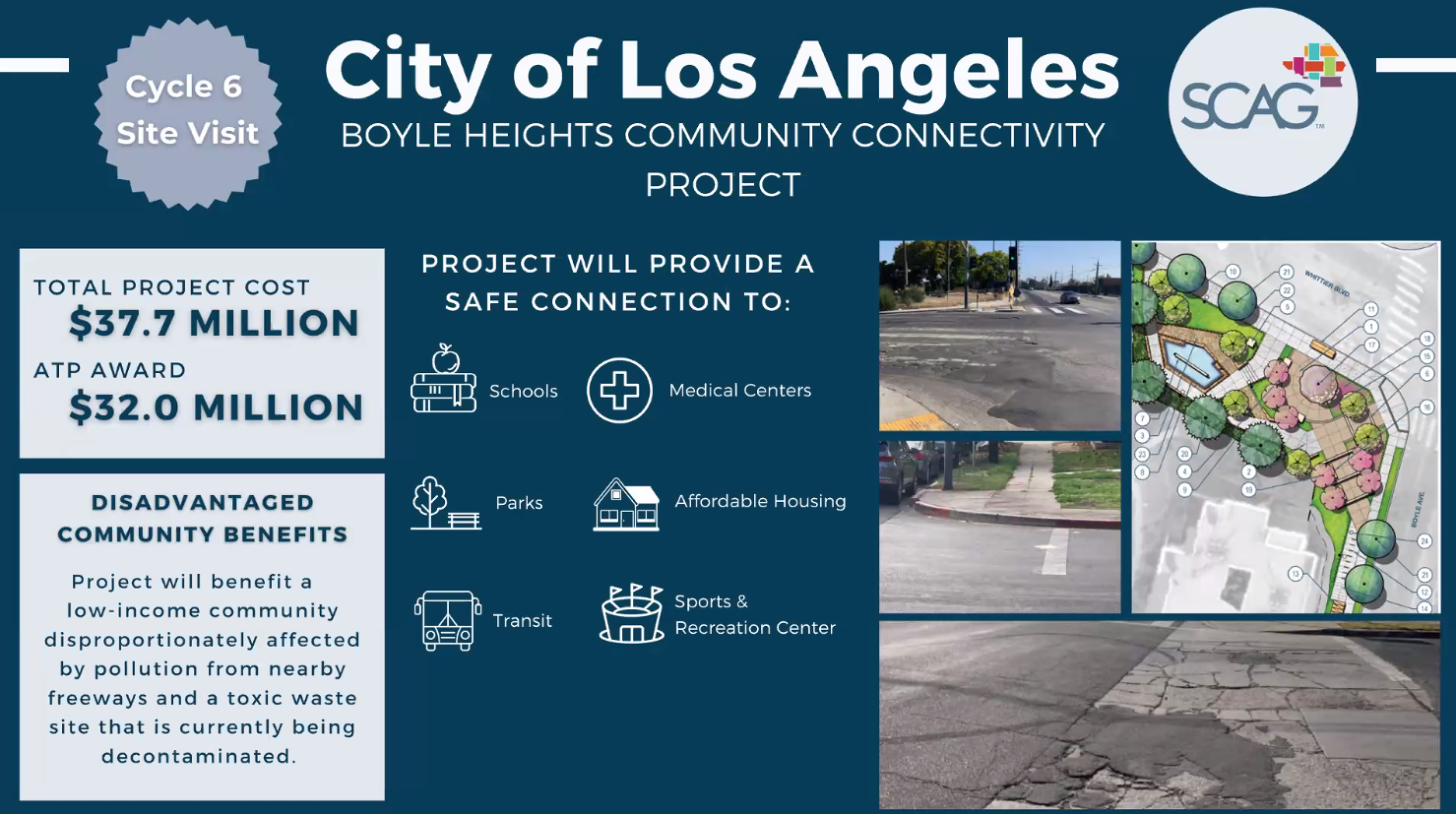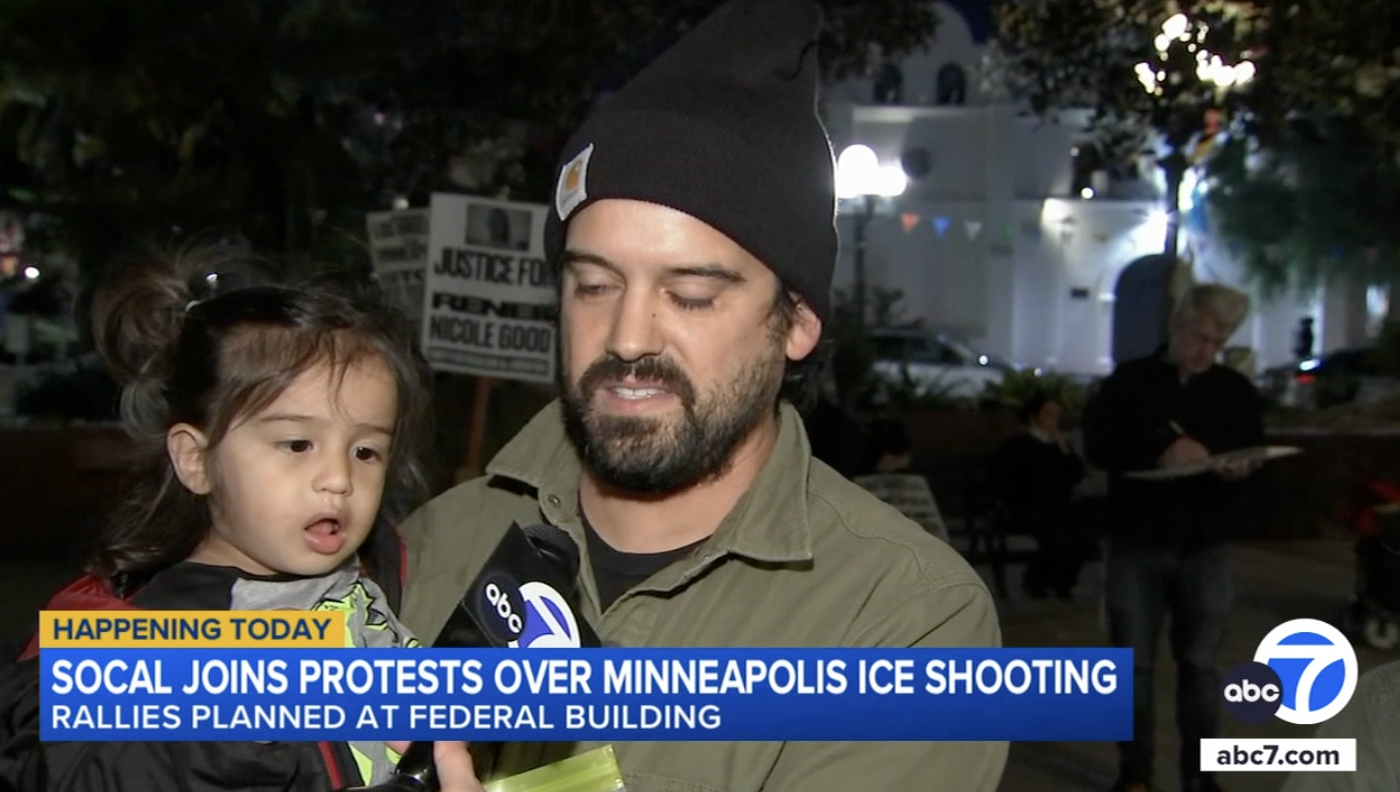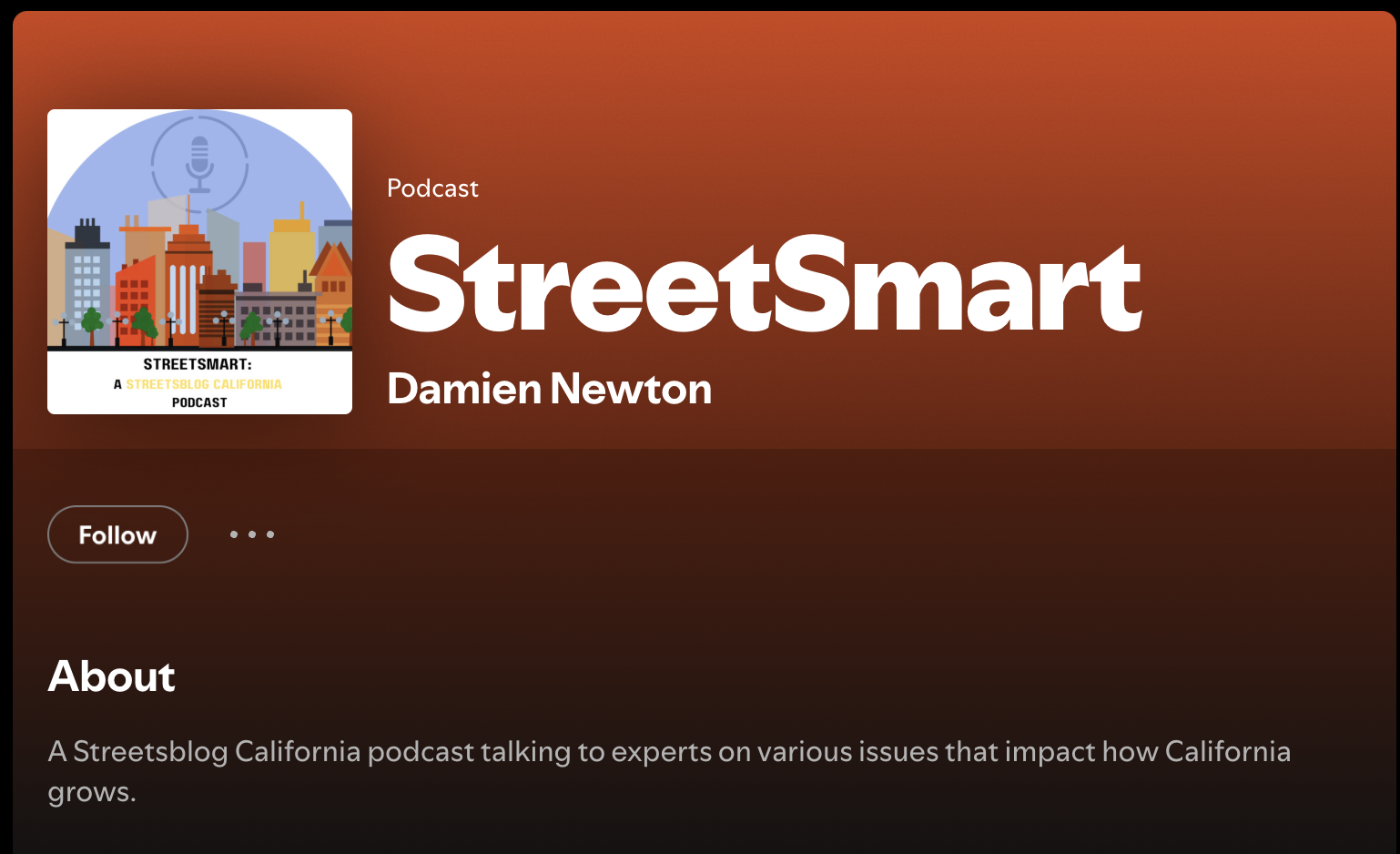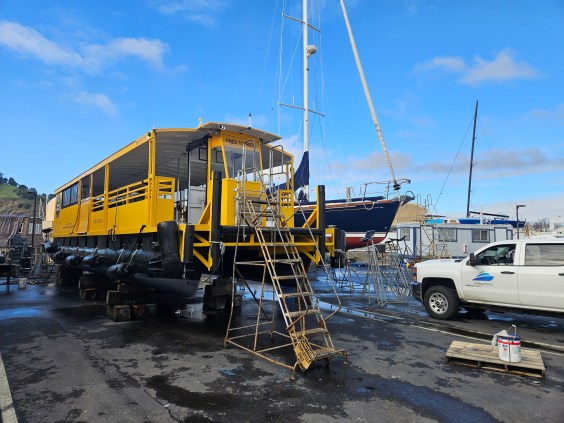The last remaining portion of the Active Transportation Program's (ATP) Cycle 6, which covers fiscal years 23-24 through 26-27, was approved this week by the California Transportation Commission. The 134 projects - top priorities of nine of the state's ten regions with a regional Metropolitan Planning Organization (MPO) - will receive a total of $539 million.
This is in addition to previously adopted portions of Cycle 6 funding for projects in the statewide, small urban and rural, and Bay Area portions of the program. (The first two were adopted in December 2022, and the last in May of 2023.) The MPOs were allowed to either let stand the CTC staff scores from the statewide portion, or use their own scoring process and provide a different list of their chosen projects to the CTC for approval.
After the statewide portion of the program was approved, five of the MPOs issued supplemental calls for projects: Fresno Council of Governments (FresnoCOG), SACOG (Sacramento), SJCOG (San Joaquin), StanCOG (Stanislaus), and Tahoe's MPO. Other MPOs receiving funding are SANDAG (San Diego), SCAG (Southern California), KernCOG, and Tulare.
The Bay Area's Metropolitan Transportation Commission (MTC) submitted its priority list before the April deadline. Because this portion of the ATP is distributed by formula, based on population, the CTC was able to approve $143 million for fifteen Bay Area projects at its May meeting. Those projects are listed here.
Scores on these projects are lower than in the very competitive statewide portion, with the highest at 89 and many solidly in the 80s. Because some MPOs did their own scoring, not all of the projects were scored by state evaluators. A few of the approved projects received pretty low state scores, including several in and near Simi Valley (City of Fillmore Active Transportation Program Assessment, Simi Valley Bicycle Master Plan, and Arroyo Simi Greenway, coming in with state scores of 40, 55, and 29, respectively). However, their local scores are higher, and the state, having approved each MPO's scoring guidelines, deferred to their priorities.
Projects benefiting disadvantaged communities make up 92 percent of the funding, exceeding a requirement that at least 25 percent do so. The list also includes sixty Safe Routes to School projects, for about 54 percent of the total funding.
Below are example projects highlighted by staff.
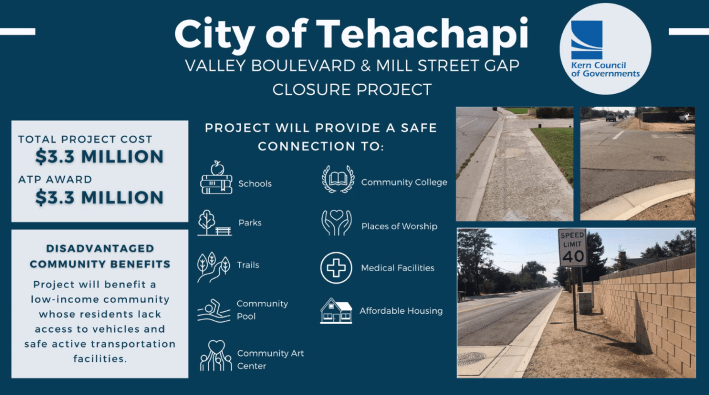
- KernCOG, City of Tehachapi: Valley Boulevard and Mill Street Gap Closure Project, $3 million. Currently in this area, children walk to school on muddy shoulders, and bicyclists must mix with vehicle in fast-moving traffic. This project will "close a gap in Tehachapi's active transportation network" by adding sidewalks and on-street bike lanes.
- SACOG, West Arden Arcade in Sacramento County: Bell Street Safe Routes to School, $9 million. West Arden Arcade is home to several vulnerable populations, including seniors who rely on active transportation to access everyday necessities and a large cohort of Afghan refugees with limited vehicle access. The streets lack continuous sidewalks, safe crossings, and dedicated spaces for bicycles. This project will construct sidewalks, Class II bike lanes, crosswalks, curb ramps, and shortened crossings.
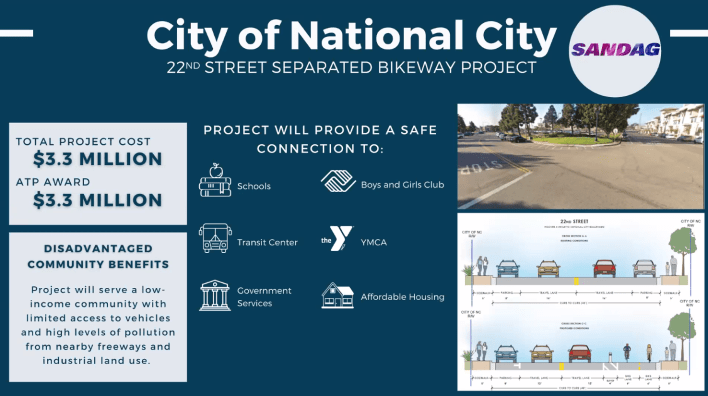
- SANDAG, City of National City: 22nd Street Separated Bikeway, $3 million. This is low-income community with limited access to vehicles and high levels of pollution from nearby freeways and industrial land use, with a transit center but without safe facilities to walk and bike to it. This project will construct a bike path and separated bikeways, bike signals, sidewalks, and intersection timing improvements.
- SJCOG, City of Stockton: Main and Market Complete Streets, $8 million. This low-income area lacks sidewalks and bike lanes. This project will provide on-street bike lanes, new and enhanced sidewalks, crosswalks, curb ramps, and improved intersection lighting.
- SCAG, City of Los Angeles: Boyle Heights Community Connectivity Project, $32 million. This low-income community, disproportionately affected by pollution from nearby freeways and a toxic waste site that is currently being decontaminated, forces people on foot and bike to navigate dangerous crossings, broken sidewalks, and freeway onramps and offramps. This project will add protected, separated bikeways, new sidewalks, improved crosswalks, bike racks, bike lockers, hydration stations, e-bike charging stations, street lighting, shade trees, and benches.
- StanCOG, City of Ceres: Improving Pedestrian Safety on Central Ave and Hackett Road Corridor, $2.5 million. Many children walk or bike to school along dusty, busy streets without sidewalks or bike lanes. Where sidewalks do exist, they are often in disrepair or obstructed by power poles. This project will add on-street bike lanes, sidewalks, curb ramps, and shortened crossings to create a safer walking and biking environment.
- Tahoe MPO, City of South Lake Tahoe: Pioneer Trail Pedestrian Improvement Project Phase 2, $1.2 million. This project will add on-street bike lanes, street lighting, sidewalks, and shortened pedestrian crossing distances.
- Tulare County Association of Governments: Tule River Tribe Complete Streets and Two Pedestrian Bridges Project, Phase 1, $3 million. This project is located on the Tule River Reservation, where many residents lack access to drinking water, healthy food, and vehicles. The Reservation has limited active transportation facilities, leaving residents to choose between walking and biking in the traffic lanes or dirty and muddy shoulders. This project will add sidewalks, crosswalks, curb ramps, intersection lighting, and a multi-use trail. In addition, the project includes non- infrastructure bike and pedestrian skills courses for children. Staff also pointed out that traditional basket weave designs of the Tule River tribe will be incorporated into some of the built elements.
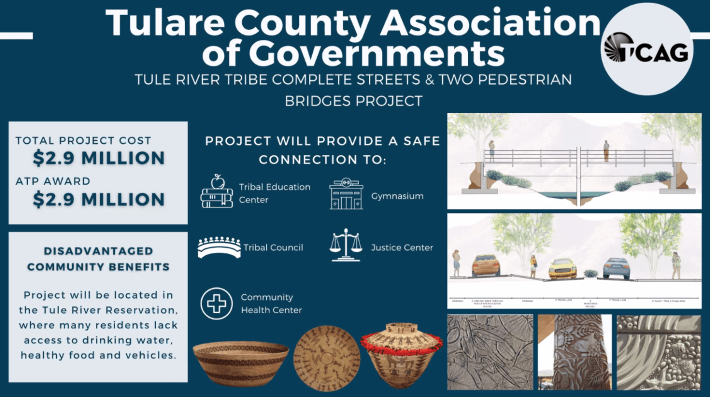
The entire list of projects approved at this week's CTC meeting can be found here.
